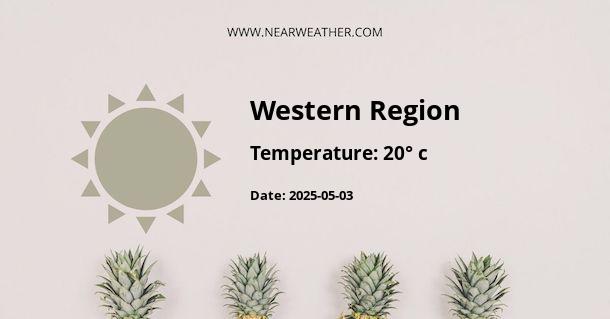Weather in Pashchimanchal, Nepal
Pashchimanchal, also known as the western region of Nepal, is a diverse and culturally rich area that boasts a variety of climates and weather patterns. The region is known for its breathtaking landscapes, including the majestic Himalayas, lush valleys, and subtropical forests. Understanding the weather in Pashchimanchal is essential for travelers, hikers, and anyone looking to explore this beautiful region. Let's take a closer look at the climate and weather in Pashchimanchal throughout the year.
Climate Overview
Pashchimanchal experiences a unique blend of climates, ranging from subtropical in the lowlands to alpine in the high-altitude areas. The region's climate is greatly influenced by its topography, with high mountains to the north and the Terai plains to the south. This variation in elevation contributes to diverse weather conditions throughout the year.
Weather by Season
Spring (March to May)
Spring in Pashchimanchal brings moderate temperatures, making it an ideal time to visit the region. The weather gradually warms up, and the landscape comes alive with blooming flowers and lush greenery. Daytime temperatures range from 20°C to 30°C, while the nights can still be cool, especially in the higher elevations.
Summer (June to August)
Summer in Pashchimanchal is characterized by warm and humid weather, especially in the Terai region. Temperatures can soar to around 35°C in the lowlands, while the higher elevations experience milder temperatures. The summer months also bring the monsoon season, with heavy rainfall that contributes to the region's lush vegetation.
Autumn (September to November)
Autumn is considered the best time to visit Pashchimanchal, as the weather is generally stable and clear. The temperatures are comfortable, ranging from 15°C to 25°C, making it an excellent time for trekking and outdoor activities. The skies are typically clear, offering stunning views of the Himalayas and surrounding landscapes.
Winter (December to February)
Winter in Pashchimanchal brings cold temperatures, especially in the higher altitude areas. Daytime temperatures range from 5°C to 15°C, while the nights are cold, often dropping below freezing. The high mountains are covered in snow, creating picturesque winter scenery, but also making some areas challenging to access.
Precipitation and Humidity
Pashchimanchal experiences a significant variation in precipitation and humidity levels across the region. The Terai plains receive the highest amount of rainfall, particularly during the monsoon season, contributing to the region's fertile farmland. In the higher elevations, precipitation is predominantly in the form of snow during the winter months. Humidity levels are highest during the summer due to the monsoon rains, while the air tends to be drier during the winter months.
Extreme Weather Events
Like many mountainous regions, Pashchimanchal is susceptible to extreme weather events such as landslides, flash floods, and avalanches, particularly during the monsoon season. It's important for visitors and residents to stay informed about weather forecasts and be prepared for sudden changes in weather conditions, especially when traveling to higher elevations.
Conclusion
Understanding the climate and weather patterns of Pashchimanchal is essential for anyone planning to visit or explore this diverse region. From the lush greenery of spring to the snowy landscapes of winter, Pashchimanchal offers a wide range of weather experiences throughout the year. Whether you're seeking outdoor adventures or cultural immersion, being prepared for the weather will enhance your experience in this remarkable part of Nepal.
A - Western Region's Latitude is 28.170389 & Longitude is 83.938293.
A - Weather in Western Region is 28° today.
A - Climate Conditions in Western Region shows overcast clouds today.
A - Humidity in Western Region is 59% today.
A - Wind speed in Western Region is 5.9 km/h, flowing at 166° wind direction. today.
